|
The
churchyard
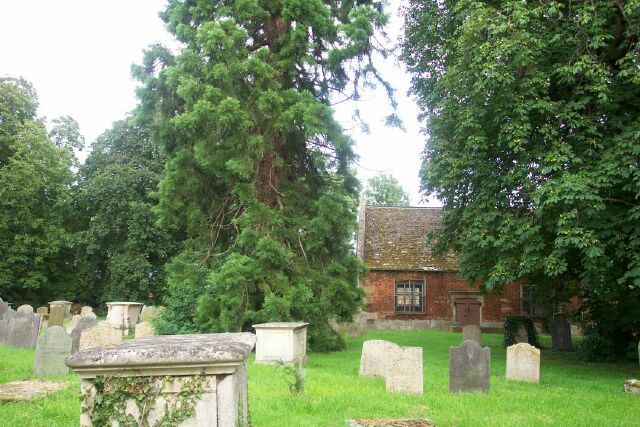
Burials
in the churchyard alongside the Abbey Church in Bourne ended in 1855
when the town cemetery was opened. There was no more space and some plots
had been used two and three times for interments with bodies stacked one
upon the other, making the erection of tombstones for each one a difficult
task.
In
the 150 years that have elapsed, the churchyard has been given less and
less care and maintenance and today it is barely tidy, the grass
infrequently cut and there is litter lying around, especially in the more
remote parts.
The popularity of our country
churchyards is not in doubt for although few may attend services in
church, one only has to inspect the Visitors' Book to see that there is a constant flow of people dropping in, often on the off chance but more frequently by design, to inspect the place where their ancestors worshipped, married, were baptised or buried, and to take away with them a memory of that occasion. This is the last resting place of those great and
good people who helped build this town and yet they are mainly forgotten,
and that is the pity for all were important in some way because only the
wealthy could afford a tombstone.
The
burial ground is a quiet and secluded spot, just a short step from the
busy town centre, and it could, with some care, become a place that people
would seek out to sit and contemplate on their lives and on those who went
before, for what better place to find peace and quiet than in a graveyard.
But
most of the graves here are neglected and overgrown, and the saddest thing
is that the once grand tombstones, some elaborately carved although there
are many more modest ones made of slate and sculpted in simple lettering,
are totally neglected, covered in ivy and lichen, often leaning and
sometimes crumbling, while others have collapsed altogether, but still
bearing the names of those who went before, made their mark and passed on
into oblivion, remembered only by a few words remaining that fade with the
years.
|
MEMORIAL TREE
There are many large trees here, horse chestnuts that overshadow the
gravestones, and there is also a giant sequoia or Wellingtonia which was planted to mark the death of the Duke of Wellington
in 1852. He was a leading personality in early 19th century England, also
becoming Prime Minister, and it was
his famous victory at the Battle of Waterloo
in 1815 that resulted in widespread rejoicing in Bourne and throughout
the land and so the planting would have been a popular occasion even
though the tree was planted a year or so afterwards..
|
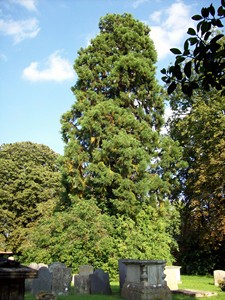 |
The church graveyard is a constant reminder of the feeble grasp we all have on life and the fleeting impression we make while we are here. Gray's Elegy is one of the most evocative poems of the English countryside ever written and it is a constant delight to read his lines and conjure up the picture of the churchyard at Stoke Poges in Buckinghamshire that gave him his inspiration and where he now lies buried. The success of this poem, Elegy Written in a Country Churchyard, published in 1751, made Thomas Gray the foremost poet of his day and it has been in continuous print ever since.
One
verse particularly, has a relevance to the churchyard here in Bourne:
Beneath those rugged elms, that yew-tree's shade,
Where heaves the turf in many a mouldering heap,
Each in his narrow cell for ever laid,
The rude forefathers of the hamlet sleep.
|
SOME INTERESTING GRAVES |
|
A BABY'S TOMBSTONE
Child mortality was prevalent during past
centuries but most babies who died at birth or immediately
afterwards were not given a grave space. But there were exceptions
such as this slate memorial to be found on the west side, now laid
flat, which remembers Arthur Ainsworth, son of George John and Mary
Nicholls, who died on 9th May 1843, aged three days. |
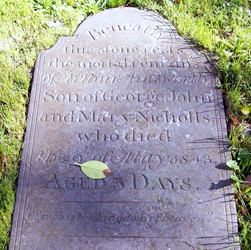 |
|
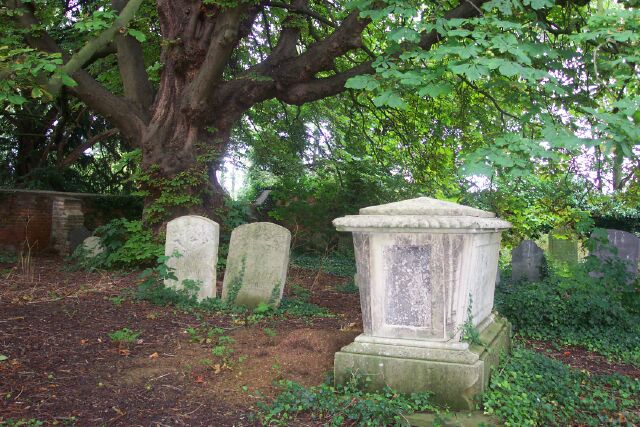 |
|
A secluded corner of the churchyard at
Bourne with a magnificent stone sarcophagus (right) erected to the
memory of John and Elizabeth Mawby from one
of the town's oldest families. John died on 26th January 1837 at
the age of 49 and is buried here but Elizabeth died on 5th
April 1856 at the age of 62 after the churchyard had been closed
for further burials. Her name is engraved on the tombstone
but she was interred instead at the newly opened cemetery in South
Road on 10th April
1856. |
|
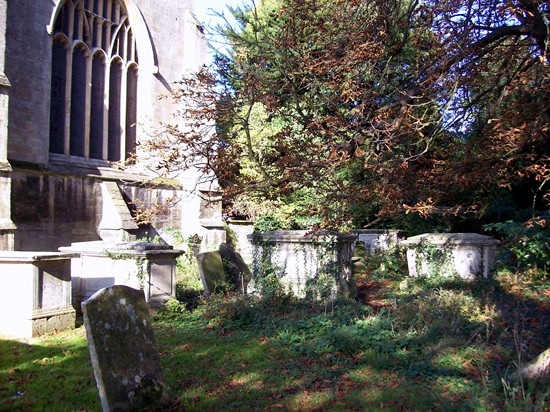 |
|
There is one corner of the churchyard with
a particular poignancy and that is below the east window, an area
much sought after because it catches the early morning sun and
therefore contains some of the more impressive memorials, large sarcophagi with elaborate inscriptions intended
to remember the great and the good of this town.
They departed this life with grand funerals and perhaps a
horse-drawn hearse with black frock-coated mourners following on
but here they lie in one of the most neglected sections and few
who visit have even heard of their names, Dyer and Layton, Mawby
and Munton, Osborn, Hurn, Phillips and Dove, all once leading
citizens of this town but now totally forgotten. One of the
biblical quotations from Ecclesiastes 1
provides an appropriate epitaph: "Vanity of vanities;
all is vanity." |
|
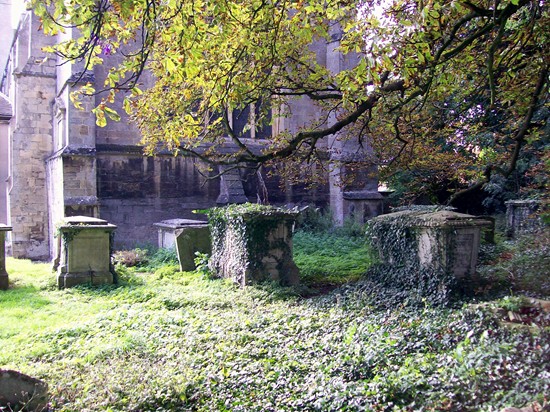 |
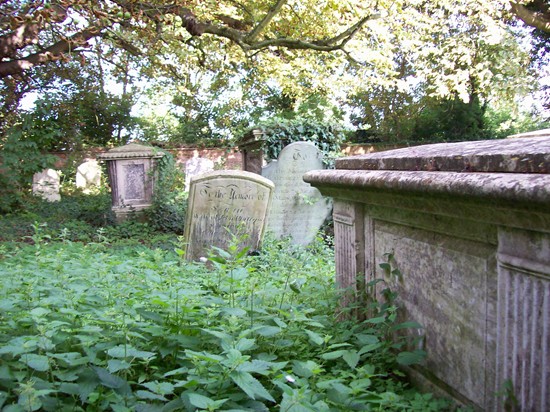 |
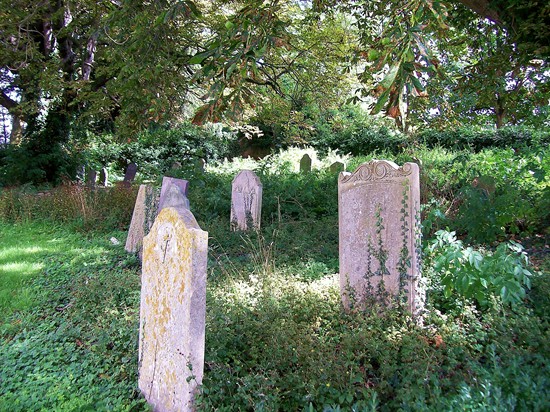 |
|
MORE VIEWS OF THE CHURCHYARD |
|
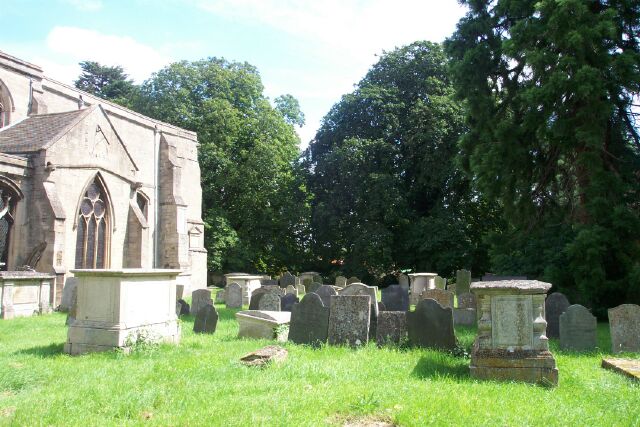 |
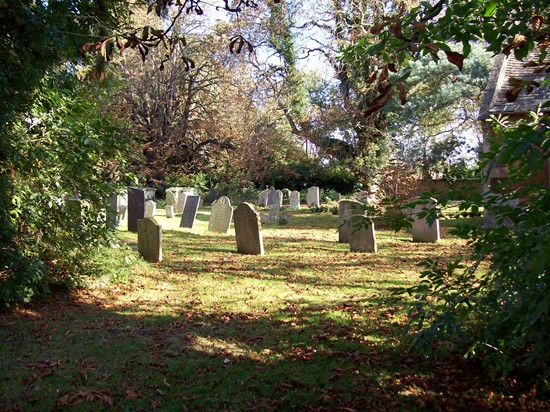 |
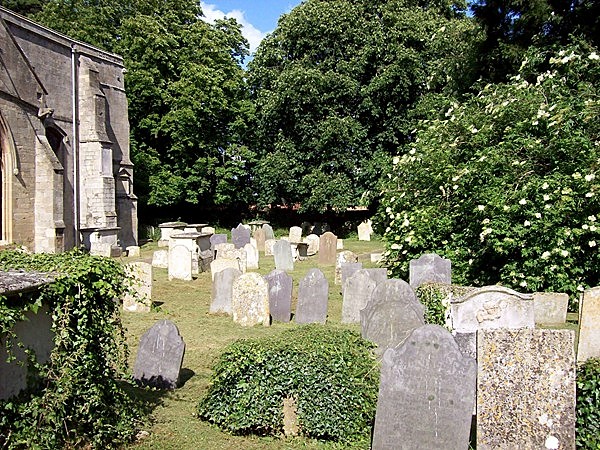 |
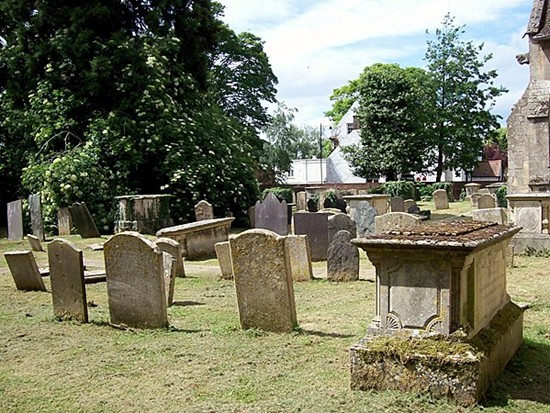 |
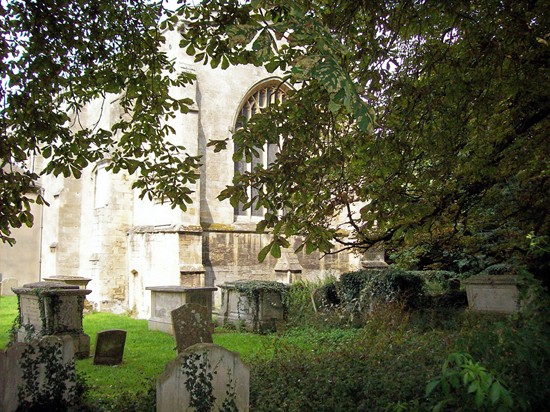 |
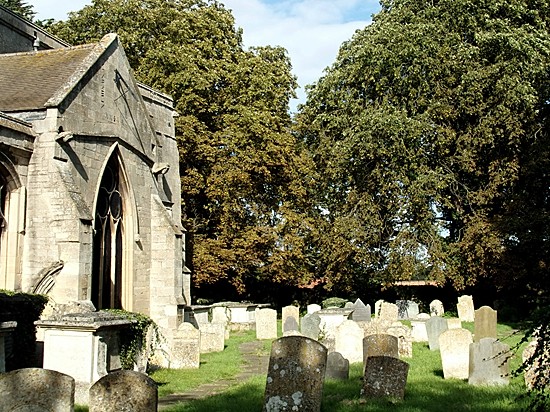 |
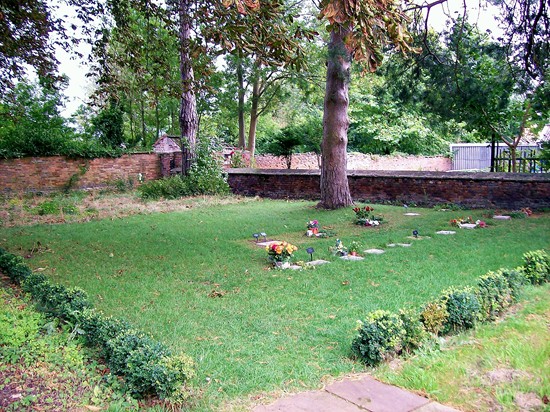 |
|
In
2003, an unused section of the graveyard on the southern edge was cleared
of weeds and grass and edged with shrubs to form a new burial ground to be
used mainly for children who have passed on, although others are also
allowed according to circumstances. The memorials, however, have been
confined to small engraved tablets laid flat over the plot. A new flagged
stone pathway from the south door was also built to provide easy access
for funerals and visitors.
|
|
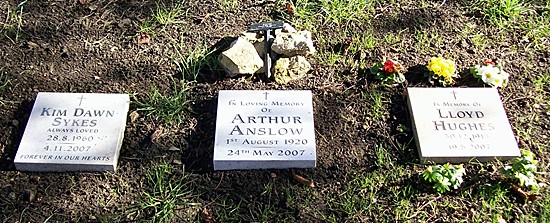 |
|
VANDALS DESECRATE THE CHURCHYARD |
|
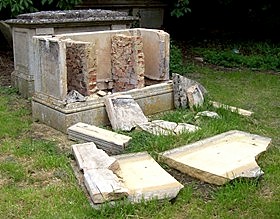 |
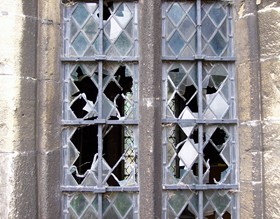 |
|
In May 2007, vandals were busy with a mindless
spot of criminal damage that wrecked a 200-year-old stone memorial
in the graveyard and shattered one of the windows in the south
porch.
The tombstone was erected in the early 19th century to the memory of
John Osborn, a local ironmonger, who is buried below. He passed away
on 1st July 1810, aged 51, and two others are buried with him,
Catherine, his wife, who died on 25th November 1826, aged 70, and
their son Pretious Osborn, who died in January 1822, aged 28, their
names being recorded on the sides of the memorial.
At the same time that this grave was being desecrated, the ancient
leaded side lights in the south porch were punctured with a stick or
pole which smashed the glass and left the metal a twisted mass. The
damage horrified church officials but repair work to the window was
included with the current £100,000 restoration appeal for the 12th
century building which was then underway. The stone sarcophagus was
another matter and unless descendants of those buried here could be
found and were willing to pay for repairs, it is likely to remain
broken.
The mentality of the culprits is hard to fathom because senseless
acts such as these cause untold distress to others and the cost to
put them right must come from voluntary effort. Those responsible,
therefore, have no place in this community and little feeling for
the church, the town or its history and in the absence of
identification, their punishment can only be remorse.
The church is insured for such eventualities and by the autumn of
2009, masons had been called in and the tombstone repaired. |
|
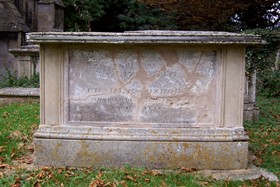 |
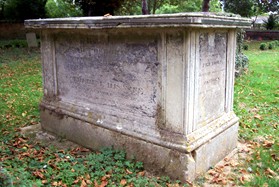 |
See also
The number of
burials The churchyard
dispute of 1846
Damaged grave links
Bourne with Australia
Epitaphs
The brass serpent tombstone Town cemetery

Go to:
Main Index Villages
Index
|


















